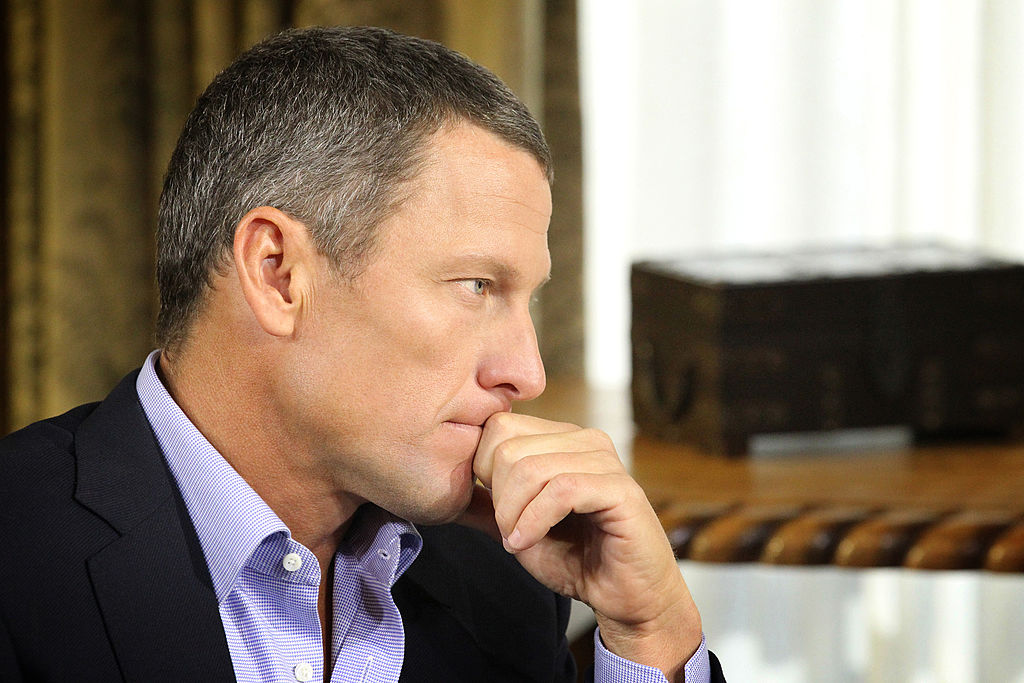Sports
How Exactly Did Lance Armstrong Cheat?

ESPN is following up its Sunday blockbuster Michael Jordan documentary series by airing out the story of a very different kind of athlete. The two-part 30 for 30 documentary Lance is far from the story of the pop-culture hero and unmatched NBA legend the nation saw in The Last Dance. Instead, audiences are getting acquainted with someone who had what Jordan had, in his own way, before destroying it all.
Cyclist Lance Armstrong is a fallen athlete. He had no triumphant return from the darkest corners of the gossip pages like Tiger Woods did. His cheating was so egregious, so pervasive, so corrosive to his sport, that there has so far been no coming back. Part two of Lance will focus on the back half of Armstrong’s career. This is how he cheated, how he got away with it, and why it marred his reputation for good.
When did Lance Armstrong finally get caught cheating?
RELATED: What Happened to Lance Armstrong’s Arch-Nemesis Floyd Landis?
Long-distance cycling puts an immense amount of pressure on the human body, making the sport ripe for rampant PED abuse. When Armstrong was the subject of doping accusations just before the 2010 Tour De France, it wasn’t the first time.
Considering the source was a former teammate, Floyd Landis, who was previously stripped of a title for PED abuse, it wasn’t immediately cut and dry.
As the investigation expanded, it became apparent that Landis wasn’t just right — he might’ve actually low balled his accusations. He claimed that Armstrong kept his own blood available for transfusions, which he put back into his body mid-race. Landis claimed Armstrong also abused testosterone to aid recovery, according to Business Insider.
It turned out that Armstrong had a years-long, meticulously designed plan for doping. It wasn’t just personal; he browbeat his teammates into following suit, according to Bleacher Report. Armstrong even paid out bribes to keep positive tests under wraps.
He repeatedly insisted he was clean and accused his critics of unfairly smearing him. Within months, Armstrong went from an American sports hero to pop culture pariah. So, what is the doping method that Armstrong went to such lengths to conceal?
What is blood doping?
RELATED: What Is Lance Armstrong’s Net Worth Today?
According to WebMD, blood doping refers to any illicit method of improving physical endurance and performance via boosting the athlete’s ability to oxygenate their muscles. The simplest method is to extract the athlete’s blood before an event, then transfuse it back during opportune moments before or in the middle of competition.
MedlinePlus notes that a hormone known as erythropoietin (EPO) can raise the body’s production of red blood cells. Synthetic oxygen carriers can also be injected for a similar effect.
Various blood doping therapies used in conjunction can have a compound effect, as well. Armstrong, for example, used human growth hormone, testosterone, and cortisone alongside his mid-race transfusion habit.
Other famous instances of blood doping in sports
Armstrong was far from the first to rely on blood doping to get an edge. In fact, it wasn’t even illegal in many sports for a long time. Cyclist Francesco Moser used blood transfusions throughout the ’80s to win events and break records, according to Cycling News.
Today, transfusions are explicitly banned. Track and field star Rashid Ramzi lost his 1,500-meter dash gold medal in 2008 after testing positive for EPO. It was his native Bahrain’s first medal; due to a failed blood doping strategy, the country has to settle for none. 2008 was a particularly rough year for doping gold medalists.
Austrian skier Max Hauke has probably the most dramatic blood doping tale. He wasn’t caught after the fact via testing, as most athletes are. He was caught almost literally red-handed, receiving a blood transfusion just as a police raid erupted. The embarrassed skier received a five-month sentence for his role in an illegal doping scheme.











